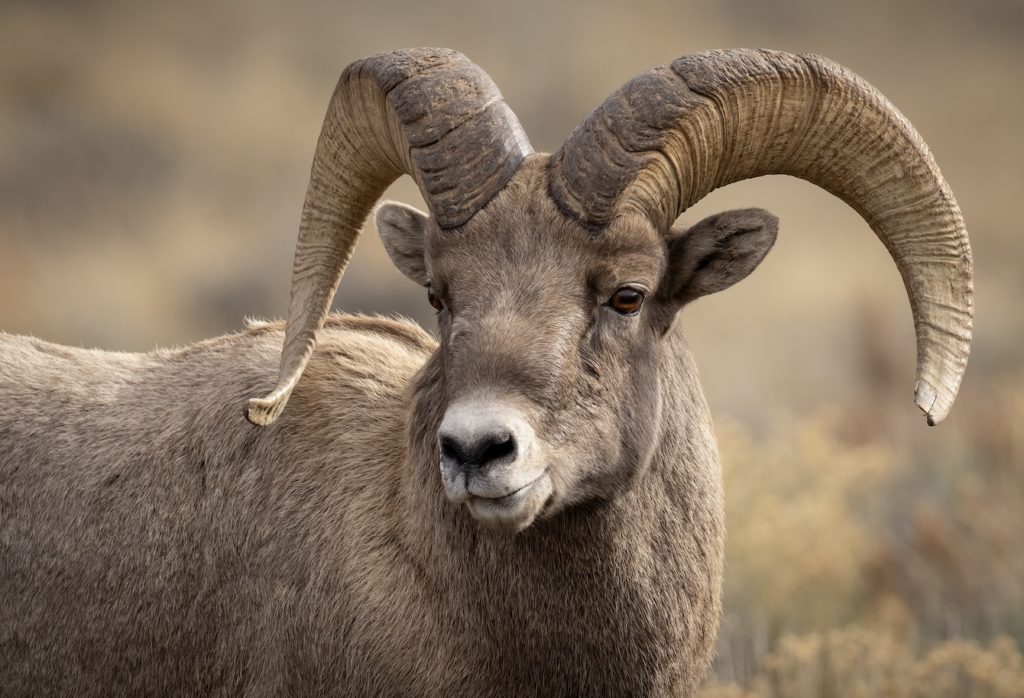Species in Peril:
Bighorn Sheep

Their powerful horns make them hunting targets
The range of the bighorn
Bighorn sheep inhabit the cooler alpine regions of Canada and the United States, such as the Rocky Mountains and Sierra Nevada. The desert bighorn sheep subspecies, on the other hand, is native to the arid desert environments of the Southwest United States and Mexico.
Alpine meadows, grassy mountain slopes, and foothill land near rough, rocky cliffs and bluffs are all common habitats for bighorn sheep. Because bighorn sheep can’t navigate through deep snow, they prefer drier slopes with less than 150 cm (60 in) of snowfall every year. The winter range of a bighorn is usually lower than its summer range.
Bighorn sheep graze on grasses and browse shrubs, and seek minerals at natural salt licks, especially in the fall and winter. Females graze and wander, probably to avoid predators and defend lambs, whereas males consume, then rest and ruminate, allowing for more efficient digestion and increased body growth.
They are social beings
Unlike the mouflon, the ancestor of the domestic sheep, which has a strict dominance hierarchy, bighorn sheep live in large herds and do not usually follow a single leader ram.
The rams strive to establish a dominance hierarchy prior to the mating season, or “rut,” in order to determine access to ewes for mating. The majority of the typical horn clashing happens between rams during the pre-rut period, while similar activity may occur to a lesser amount throughout the year.
Bighorn sheep engage in agonistic behavior, which involves two competitors walking away from one another before turning to face each other and lunging into headbutts. The horns of rams are prone to damage from repeated encounters.
Females have a stable, nonlinear hierarchy that varies according on age. Females may fight for high social status when they are integrated into the hierarchy at one to two years of age.
And they need our help!
Bighorn sheep were common two hundred years ago in the western United States, Canada, and northern Mexico. A population of 150,000 to 200,000 people was estimated. Unrestricted hunting, habitat degradation, rangeland overgrazing, and diseases transmitted from domestic animals all contributed to the decline, which peaked around 1870 and peaked again around 1950.
The Arizona Boy Scouts organized a statewide campaign to conserve bighorn sheep in 1936. Major Frederick Russell Burnham was the one who first piqued the scouts’ curiosity in the sheep.
Only about 150 of these sheep remained in the Arizona mountains, according to Burnham. The National Wildlife Federation, the Izaak Walton League, and the National Audubon Society are among the organizations that have joined the initiative.
These incredible animals still need lots of help from us!
A Few More Facts About Bighorn sheep
- Females are called “ewes” and males are called “rams”
- Horn size is a symbol of rank. Male horns can weigh as much as 30 lbs.
- They can live up to 15 years in the wild.
- Bighorn sheep in the can exceed 500 lbs
- They have a short 5″ dark brown tail
- You can tell the age of a male bighorn sheep by counting the number of growth rings
- They have hind legs that can launch them 20 feet in a single leap
Species Name
Ovis canadensis
Estimated Population
80,000 globally
Conservation Status
Least concern
Range
Western North America
Reasons for Population Decline
Unregulated hunting
Predation
Habitat loss
Disease


